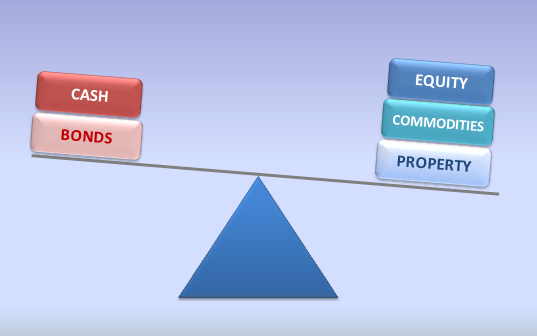- February 14, 2015
- by Prakash Lohana
- Articles
- 250 Views
- 0 Comments
In my earlier article on Risk profiling I had explained about what is Risk Profiling and how to do it? Now this article is an Effort to explain what is Asset Allocation and how it helps you.
Asset Allocation is the process of dividing your investments among different assets classes , such as Equity, bonds, real estate, commodities and cash, to optimize the risk/reward trade off based on an individual investor’s specific situation and goals. Normally in India investor’s directly start investing in securities without deciding what is optimum asset mix for them.
An individual investor has to first of all decide upon what kind of investor he is? Whether he is an Aggressive Investor or Conservative Investor or Moderate kind of Investor. This can be decided though Risk Profiling process considering his Willingness, Ability and Need to take risk. For detailed understanding of this you can read my article on Risk Profiling. Once this is done he has to decide his allocation to different asset classes. I have, here below categorized an Investor into five different categories and have given indicative asset allocation.

There are different types of asset allocation strategies like Strategic Asset Allocation, Tactical Asset Allocation, and Dynamic Asset Allocation etc. The most scientific asset allocation is Strategic Asset Allocation. Today in this article I will try to explain you How Strategic Asset Allocation works and how can it benefit you?
Strategic Asset Allocation: In Strategic Asset Allocation, once you decide your allocation to different asset classes like Equity, Bonds, and Commodities etc. Then you have to stick to that allocation in percentage terms and for that you have to review and rebalance your asset allocation either at a periodic frequency or with some prefixed triggers. Let us understand through one example.
Note: To make things simple I have assumed here 8% returns on Bonds and have taken hypothetical values of Sensex, so that you can easily understand functioning of Strategic Asset Allocation.
For example you have Rs. 10 lacs to invest and you have, through your risk profiling come to conclusion that you want to invest 50% in Equity and 50% in Bonds and for that you have invested 50% i.e Rs. 5 lacs in a Sensex Fund and remaining 50% in a Bond Fund. Now let us assume Sensex is at 20000.
Chart-1
Investment :100000
Equity : 50%
Debt : 50%

In Strategic Asset Allocation this allocation of 50% to Equity and 50% to Bonds is reviewed at a regular periodic frequency say quarterly or half yearly or yearly basis and portfolio is rebalanced to bring it back to original allocation in percentage terms. Refer following chart to understand this.
Chart-2

Now in above chart you can see that after six months on 30/06/2014 Sensex has grown from 20000 to 25000 that is 25% so money invested in Equity has grown equally and become Rs.6.25 lakhs from Rs. 5 lacks and as per our assumption Bonds have grown by 4%/ So money invested in bonds has grown to Rs. 5.20 lakhs and now allocation to Equity has changed to 54.59% and Bonds 45.41% so our original allocation of 50:50 has significantly changed. As per strategic Asset Allocation we have to bring it back to our original allocation of 50% to Equity and 50% Bonds and for this we will have to withdraw around Rs.52500 from Equity and invest into Debt. After re balancing it will be back to original allocation of 50% to Equity and 50% to Debt.
Exactly reverse to the above scenario, suppose Sensex after six month on 30/06/2014 falls to 15000, than what will happen. Let us see in below chart.
Chart- 3

As you can see Sensex has fallen to 15000 and value of money invested in Equity has fallen to Rs. 375000 but more importantly in percentage terms it has fallen to 41.90% of total value and in debt it is Rs. 520000 which is 58.10% so we have to re balance and invest Rs. 72500 in equity to make it 50% and withdraw from bonds the same amount of money.
This is how Strategic Asset allocation works.
Most important benefits of Asset Allocation: You may say that this is very simple and you may doubt its benefits.
- Buy at Low and Sell at High: We make our investments with a primary objective to buy when markets are low and sell when markets are high but normally we end up doing exactly opposite. But Strategic Asset Allocation is a scientific process which keeps our emotions away and through process it assures that we always buy at low and sell at high.
- Keeps you away from Market Timing: Investors always try to time the market and for that they try to predict markets and macro economic factors and most of the times they fail in this and make loses. Asset allocation helps you to keep yourself away from this and remain process driven.
Conclusion: Asset Allocation is Backbone of your portfolio and without following proper asset allocation strategy you cannot become a successful investor. In my next post I will give you back testing of Strategic Asset Allocation with historical data to prove my point.

